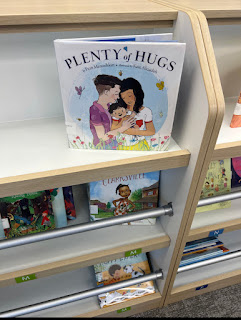By Gretchen Garrity
Many parents have no idea of the books that are being marketed to even very young children in today’s public libraries. Books like Julian is a Mermaid, All are Welcome, Welcome Back, Pink is for Boys, Mommy, Mama, and Me, I Am Jazz, It Feels Good To Be Yourself, Love Makes a Family, Plenty of Hugs, and the “classic” Heather Has Two Mommies are all titles that are in the Christian County Library system. Many of the above books are located in the Sparta branch library. Suggested reading ages are anywhere from three years of age and under to four-to-eight years of age.
 | ||
| Sparta book display |
While these particular books are not overtly sexualized, they do set up—as normal—the idea that a boy can be a girl, that a loving parent or grandparent would encourage gender fluidity, or that a family can be comprised of two moms, etc. The indoctrination starts early. And when a child reaches age 10 or 12, there is a plethora of other, more explicitly sexual books written just for them. By the time a child reaches the teen years, they have been “positively” exposed to significant amounts of sexualization that would have been unheard of in previous generations.
Why are such books being heavily marketed to very young children?
Back in the 1970s, radical activists and librarians began the process of deconstructing how books are cataloged. The goal was to move the classification of homosexual-themed books out of the traditional subject headings and into an ever-growing variety of classifications. Later, the library activists branched out to Queer Theory as it pertains to the normalization and dissemination of any kind of sexuality. The targeting of children at ever younger ages is also a feature of cultural Marxism, a move to sexualize children in an effort to destabilize families and society.
 |
| Pronoun buttons in the teen section at Sparta |
In a scholastic paper titled, “Queering the Catalog,” incoming American Library Association President, Emily Drabinski, writes, “Works about religion in the Dewey Decimal System are overwhelmingly Christian (Berman [1971] 1993. 70); works about heterosexuality are barely named as such in LCSH* [Link added] (Christensen 2008, 233-34). As a result of these failures, biased ideological stories continue to be “told” by the organizational systems. As users interact with these structures to browse and retrieve materials, they inevitably learn negative stereotypes about race, gender, class, and other social identities...Similarly, they “learn” that heterosexuality in normative, that gay and lesbian sexuality is the only sexual identity to be examined, and that queer sexuality is inherently deviant.”
Just scratching the surface, what extremist activists have been busy doing is to make classifying books about sexuality, particularly any sexuality that is not heterosexual, so fluid that these books can be organized under just about any classification and placed on just about any shelf in the library. This, of course, has been going on with school textbooks for some time, with subversive ideologies being embedded within the curriculum and basically unavoidable.
For a primer on why schools, libraries, and mass media are sexualizing children, watch James Lindsay. In just over an hour, he details the Marxist Queer Theory underpinnings of overturning the existing order of society through corrupting the innocence of children.
This destablization is purposeful and militant and ongoing, whether the Christian County library staff and board of trustees are fully aware or not. If they are not already aware, they should be made aware.
*Library of Congress Subject Headings


No comments:
Post a Comment